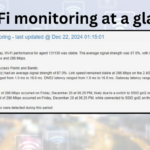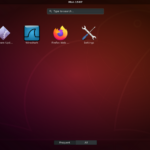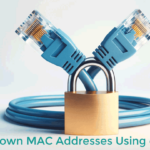When you’re watching a video on YouTube, scrolling through Instagram or shopping on a website, it’s hard to imagine the information you see is actually made of small data packets. Sometimes, the packets get sent out of order or take different paths through the Internet, but usually they reach their destination and get put back in the correct order. If they don’t, or if some go missing, this is called packet loss.
The Internet is filled with TCP/IP packets
Your computer sends data across the Internet using Transmission Control Protocol/Internet Protocol (TCP/IP). This data is sent and received in small packets. The packets are “routed” to the next router that tries to find the best path to the destination you want to reach. It starts with your router, and then talks to your ISP’s routers, which sends it on to a router outside their network. This continues until all your packets reach their destination. A reply back is sent the same way.
Typically, you wouldn’t know the website you’re reading or the movie you’re watching is made up of these packets. Sometimes they get out of order or take a longer route through the Internet. But the Internet is so quick that when they reach their destination, they normally get put back into the correct order.
Packet loss affects certain applications more
If a network between your location and the destination is experiencing slowdowns or outages, you might notice the website your visiting seems sluggish or won’t completely download. Voice over IP (VoIP) phone service can really be affected by packet loss. Calls sound jittery or the audio drops out frequently. Movies on streaming services like Netflix or Hulu may lose the sync between the audio and video or play in a choppy way.
Web browsing example
For example, you might have a browser with two tabs open to different web sites. The site in tab one might be reachable while the site in tab two is unavailable. This could mean that the unreachable site is experiencing downtime or it could mean that the path to that site experienced problems.
Now, imagine you have both tabs open to the same site and notice that you can reach the site from one tab but not the other for a few seconds. This could mean the path taken to the same location from one tab changed somewhere along the way and took a moment to recover. If both sites in both tabs cannot be reached, there is a good chance that your Internet connection has been interrupted in some way.
The nature of TCP/IP
TCP/IP by its very nature can take different paths to the same location if you are connecting to the same location with one or multiple browser tabs. Something becoming unreachable doesn’t automatically mean that your local Internet connection is experiencing problems. If your service is brought to you by a cable or wireless provider then keep in mind that you could experience not only TCP/IP problems but signal issues as well.
Internet monitoring tools to keep your connection reliable
When you monitor your Internet using OutagesIO, you will start to see what is normal and when your connection is having issues. If you see lots of short outages in your reports, you might want to search our OutagesIO forums for “excessive outages” for a brief explanation of what might be happening. Best of all, you’ll have reports you can download and share with your ISP to prove what’s really going on with your network connection.
.









